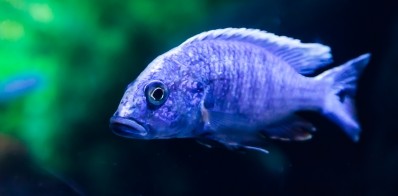Here is a healthy reminder that all those other fish in the sea aren’t so bad. I’d like to justify my belief that Lake Malawi cichlids are considerably more charming than most human companions. Before we go on, I am not encouraging you to leave your wife/husband and run to the nearest lake.
Lake Malawi, also known as Lake Nyasa in Tanzania and Lago Niassa in Mozambique, is an African Great Lake. It is located between Malawi, Mozambique, and Tanzania.
Cichlid Love
Cichlids are charismatic lovers, and their reproductive lives have been under scrutiny by Stanford University’s researchers this year due to their now famed courtship rituals of sandcastle building and pit digging. To impress a female, the male African cichlids style the sandy substrates of Lake Malawi.
It’s thought that there are as many as 1,000 species of cichlid in Lake Malawi. Male cichlids have had to develop their own unique style to ensure they catch the eye of females of the same species. The strategy each species employs is based on their preference for either deep or shallow waters. Those in deep water prefer to dig pits in the sandy bottom, whereas the cichlids in shallow, sunny waters build sandcastles.
How to Stand Out, Cichlid Style
In an attempt to outperform the pit-diggers and the sandcastle-builders, some show-offs use a combination of both strategies. Each strategy simply involves moving lots of sand to show the female they are healthier and stronger than other prospective partners.
So, why do the strategies differ so much? In terms of basic ecology, each species has to fill a certain niche, meaning they often live at a certain depth to avoid competition and thrive. Their bodies change over time to suit that environment.
The Stanford study (by Ryan York et al.) found that the deep-water pit diggers failed to evolve their visionary ability to the level of their surface-dwelling counterparts. Perhaps the complexity of the castles would be lost on the females due to their relatively poor eyesight, so males simply don’t bother. Instead the males invest a greater portion of their energy in courtship dances.
Near the surface, where species have better vision, males rely more on their sandcastle building and less on the courtship dance. The study also found that cichlids have different jaw morphology depending on whether they prefer to build sandcastles, dig holes, or dance.
In 2013, British researchers from Hull and Nottingham universities studied the effects of variation in the shape of the sandcastles. They altered the shape of some sandcastles and observed the subsequent interactions between prospective mates and competing males. After the slight changes, the respective males were less likely to get attacked by fellow competitors, while retaining the level of interest from the females. These results suggest that unique sandcastle designs are prefered by the fish. Hull and Nottingham’s findings also suggest that the building of novel sandcastles is a driving mechanism in the diversification of cichlid species in Lake Malawi.
References and Further Reading
Video courtesy of Frontiers: High Quality Open Access Publishing and Research Networking.
For more specifics on this remarkable bit of cichlid research, check out these open access publications:
Ryan A. York, Chinar Patil, C. Darrin Hulsey, J. Todd Streelman, Russell D. Fernald. Evolution of bower building in Lake Malawi cichlid fish: phylogeny, morphology, and behavior. Frontiers in Ecology and Evolution, 2015; 3 DOI: 10.3389/fevo.2015.00018.
Top Image: The electric blue hap (Sciaenochromis ahli) is a species of cichlid fish endemic to Lake Malawi. It prefers to live in caves and crevices in rocky substrates, and grows up to eight inches long. It is also found in the aquarium trade. (Photo by Criminalatt)
GotScience.Org translates complex research findings into accessible insights on science, nature, and society. For weekly science news, subscribe to our science newsletter!




